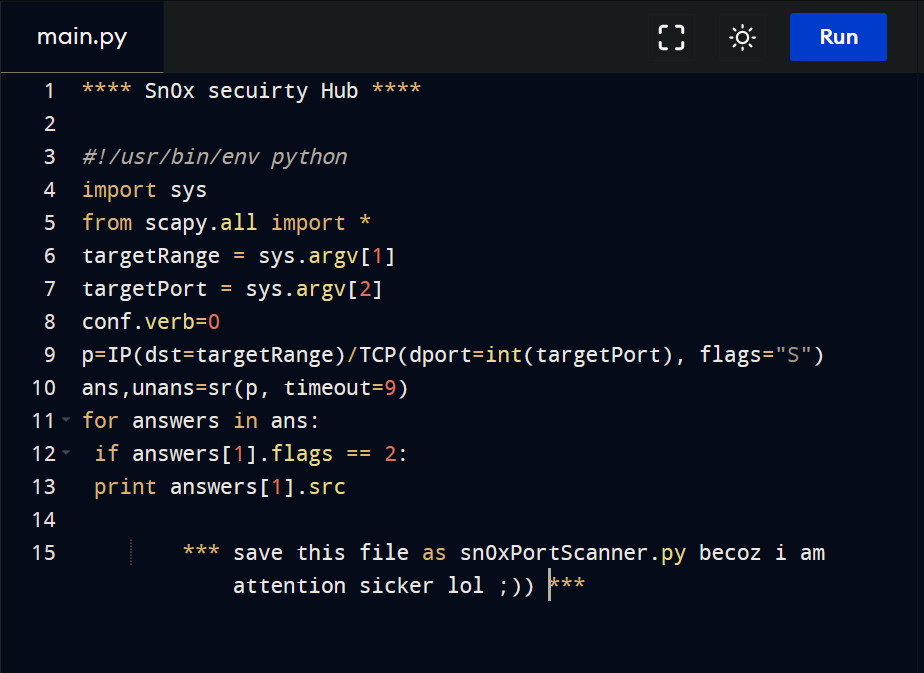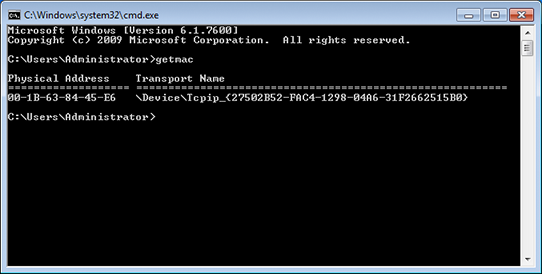

- PYTHON MAC ADDRESS TO INT HOW TO
- PYTHON MAC ADDRESS TO INT CODE
- PYTHON MAC ADDRESS TO INT PASSWORD
- PYTHON MAC ADDRESS TO INT WINDOWS
Each argument is represented by one or more characters in the format string as follows. The second argument is a format string describing the arguments as you expect them to appear. The first argument to PyArg_ParseTuple is the args argument. You can use API PyArg_ParseTuple function to extract the arguments from the one PyObject pointer passed into your C function. Static PyObject * module_func(PyObject *self, PyObject *args) , Your C functions usually are named by combining the Python module and function names together, as shown here − The names of your C functions can be whatever you like as they are never seen outside of the extension module. The Python headers define a macro, Py_RETURN_NONE, that does this for us. If you do not want your functions to return a value, return the C equivalent of Python's None value. There is no such thing as a void function in Python as there is in C. Static PyObject *MyFunctionWithNoArgs( PyObject *self ) Įach one of the preceding declarations returns a Python object. Static PyObject *MyFunctionWithKeywords(PyObject *self, Static PyObject *MyFunction( PyObject *self, PyObject *args )

The signatures of the C implementation of your functions always takes one of the following three forms − You need to follow the includes with the functions you want to call from Python.

Make sure to include Python.h before any other headers you might need. You need include Python.h header file in your C source file, which gives you access to the internal Python API used to hook your module into the interpreter. The C functions you want to expose as the interface from your module.Ī table mapping the names of your functions as Python developers see them to C functions inside the extension module.
PYTHON MAC ADDRESS TO INT CODE
First look at a Python Extensionįor your first look at a Python extension module, you need to group your code into four part −
PYTHON MAC ADDRESS TO INT WINDOWS
Windows users get these headers as part of the package when they use the binary Python installer.Īdditionally, it is assumed that you have good knowledge of C or C++ to write any Python Extension using C programming. On Unix machines, this usually requires installing a developer-specific package such as python2.5-dev. To start writing your extension, you are going to need the Python header files. On Unix machines, these libraries usually end in. This code is considered as an "extension."Ī Python extension module is nothing more than a normal C library. Ver = re.Any code that you write using any compiled language like C, C++, or Java can be integrated or imported into another Python script.
PYTHON MAC ADDRESS TO INT HOW TO
#Version might start with 'v'(wedge) or 'V'(Yosemite) Well organized and easy to understand Web building tutorials with lots of examples of how to use HTML, CSS, JavaScript, SQL, Python, PHP, Bootstrap, Java, XML and more. Reset_reason = "User Initiated Reset or WDT Reset" Self.publish(topic = self.prefix, payload="Online", qos=1, retain=True)ĭef machineMeasureRun(jobFlowToM, nothing): #self.publish(topic = "system/"+ self.prefix, payload="Online", qos=1, retain=True) Self.will_set( topic = self.prefix, payload="Offline", qos=1, retain=True) #self.will_set( topic = "system/" + self.prefix, payload="Offline", qos=1, retain=True) Self.prefix = prefix + "/" + str(mac) + "/" + pinid Mosquitto.Mosquitto._init_(self,clientId)
PYTHON MAC ADDRESS TO INT PASSWORD
Self.gateways = ni.gateways()ĭef _init_(self,Pins = ,ip = "localhost", port = 1883, clientId = "MQTT2StepperMotor", user = "driver", password = "1234", prefix = "StepperMotor"): Let’s say our program is: program to add two numbers in python 3 number1 input ('enter number 1:') number2 input ('enter number 2:') sum number1 + number2 print ('sum ' + sum) 1. Self.ipaddress = ni.ifaddresses(self.iface) To change that string into a int type variable, we can use two different methods as given below.


 0 kommentar(er)
0 kommentar(er)
